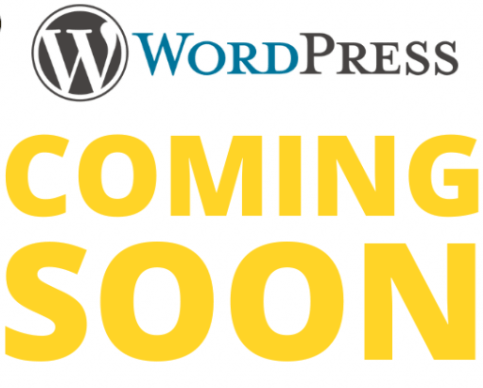In today’s digital age, website performance is key to attracting and retaining visitors.
We will explore some basic speed optimization steps for WordPress, including choosing a reliable hosting provider and implementing a cache plugin.
We will also delve into best practices for improving speed, such as selecting a speed-optimized theme and utilizing content delivery networks (CDNs).
Advanced performance optimization strategies like deferred loading of JavaScript and optimizing the WordPress database will also be discussed.
Learn how to optimize your WordPress site for peak performance with PHP best practices.
Key Takeaways:
Introduction to Optimizing WordPress Performance with PHP Best Practices
Optimizing WordPress performance with PHP best practices is crucial for enhancing website speed, user experience, and search engine rankings.
By utilizing efficient PHP techniques, developers can significantly reduce loading times, boost interactivity, and improve overall site performance.
Optimizing WordPress performance
not only enhances user experience by providing a seamless browsing experience but also positively impacts SEO rankings by increasing site credibility and visibility. Implementing
performance optimization
strategies such as caching, minimizing HTTP requests, and optimizing database queries can lead to a substantial improvement in site speed and overall user engagement.
Importance of Website Performance
Website performance is a critical factor that directly impacts user experience, search engine rankings, and overall site success.
“
Regarding WordPress sites, optimizing for speed is essential to enhance user engagement and ensure visitors stay on your site longer. A faster loading time not only improves the user experience but also boosts your site’s search engine visibility as search engines like Google prioritize sites that load quickly. Site speed is a key component of SEO optimization strategies as it directly influences factors like bounce rate, conversion rates, and ultimately, the achievement of business goals. Employing best practices for website optimization such as image compression, minification of CSS and JavaScript, and utilizing caching mechanisms can significantly enhance your site’s performance and competitiveness.
Basic Speed Optimization Steps for WordPress
Implementing basic speed optimization steps in WordPress can significantly improve site performance and loading times.
One of the fundamental strategies for optimizing speed in WordPress is leveraging caching techniques. By implementing a caching plugin like WP Super Cache or W3 Total Cache, you can store static copies of your website’s pages to reduce server load and speed up loading times.
- Another crucial aspect of speed optimization is image optimization. Compressing images, resizing them appropriately, and using modern image formats like WebP can help decrease page load times significantly.
- Integrating lazy loading techniques is also key to speeding up WordPress websites. Lazy loading delays the loading of non-essential resources until they are needed, improving initial load times.
Choosing a Reliable Hosting Provider
Selecting a reliable hosting provider is essential for ensuring consistent website performance, uptime, and security.
Regarding hosting for WordPress sites, the quality of the server plays a crucial role. Opting for a provider with fast servers can significantly improve loading times and user experience. Additionally, reliability is vital to prevent frequent downtimes that can harm your website’s reputation and rankings. It’s also important to consider the support services offered by the hosting provider. A responsive support team can help troubleshoot issues promptly, ensuring your site runs smoothly. By carefully scrutinizing these factors, you can find a hosting provider that caters to your specific needs and sets the foundation for a successful online presence.
Implementing a Cache Plugin
Utilizing a cache plugin is a simple yet effective way to optimize website speed and reduce server load.
By leveraging the power of caching, these plugins store static versions of your site’s content, such as HTML files, CSS stylesheets, and images, making it quicker to load for visitors.
This results in faster loading times, thereby enhancing the overall user experience and potentially boosting your site’s search engine rankings. Cache plugins can also help in reducing the load on your server by serving cached content instead of dynamically generating it with every visit, leading to more efficient server resource utilization.
Optimizing Images and Implementing Lazy Loading
Optimizing images and implementing lazy loading are key strategies to enhance website speed and reduce bandwidth usage.
Regarding image optimization, resizing, compressing, and selecting the right file format can significantly impact load times. High-quality images are essential for a visually appealing website, but they can also slow down the site if not optimized properly. Lazy loading, on the other hand, delays the loading of images until they are about to be viewed, thereby improving initial load times and overall performance.
Implementing these techniques in WordPress can have a profound effect on user experience and SEO rankings. Site visitors are more likely to engage with a fast-loading website, leading to lower bounce rates and higher conversion rates. Search engines like Google prioritize sites that load quickly and provide a seamless experience for users, which can positively impact your site’s SEO performance.
Best Practices for Improving Speed
Implementing best practices for improving speed in WordPress involves selecting optimized themes, avoiding resource-heavy sliders, and utilizing content delivery networks.
Optimized themes are essential for ensuring efficiency in WordPress websites as they are lightweight and designed to enhance performance.
Regarding sliders, it’s crucial to opt for minimalist designs or use static images to prevent slowdowns caused by excessive animations.
Plugin optimization plays a vital role in streamlining the functionality of your site without compromising speed.
Integrate a Content Delivery Network (CDN) to distribute content across various servers worldwide, reducing latency and improving loading times.
Regular updates of WordPress core, themes, and plugins are imperative to maintain optimal speed and security.
Selecting a Speed-Optimized Theme
Choosing a speed-optimized theme is crucial for maintaining fast load times, mobile responsiveness, and overall site performance.
Speed-optimized themes play a fundamental role in determining how quickly your website loads and functions, directly impacting user experience and SEO rankings.
By utilizing a theme that is built for speed and performance, you can ensure that visitors have a seamless browsing experience, reducing bounce rates and increasing engagement.
Optimizing your theme for speed also improves your site’s overall performance, which is essential for attracting and retaining users in today’s competitive online landscape.
Avoiding the Use of Sliders in the Header
Eliminating resource-heavy sliders from the header can significantly improve site performance by reducing unnecessary script execution and loading times.
Sliders in the header are often laden with high-resolution images, animations, and various scripts that can slow down the site’s speed and performance. This not only affects the user experience by causing longer load times but also impacts SEO rankings due to higher bounce rates.
Sliders can be distracting, leading to decreased engagement with essential content. To address these issues, website owners can consider using static hero images, call-to-action banners, or content carousels, which offer a more lightweight and effective way to showcase important information without compromising performance.
Removing Bloated Plugins
Removing bloated plugins is essential for streamlining site performance, reducing server load, and preventing compatibility issues.
Bloated plugins are often the culprit behind sluggish website performance, causing longer load times and frustrating user experiences. These plugins consume excess server resources, leading to slower response times and potential downtimes. By optimizing plugins and ensuring they are resource-efficient, website owners can significantly enhance their WordPress performance
- Plugin optimization involves eliminating redundant features, cleaning up code, and prioritizing essential functionalities.
- Efficient plugins can reduce page load times, improve site speed, and enhance overall user satisfaction.
This not only benefits the site’s performance but also positively impacts search engine rankings and conversion rates. Therefore, prioritizing plugin optimization is crucial for achieving optimal website performance and delivering a seamless user experience.
Utilizing Content Delivery Networks (CDNs)
Integrating a content delivery network (CDN) can enhance website speed, global accessibility, and user experience by caching content on servers worldwide.
CDNs play a crucial role in reducing latency as they store cached copies of your website’s content closer to the end-users, leading to faster loading times and improved performance. CDNs distribute the traffic load across multiple servers, which helps in enhancing scalability and managing spikes in web traffic efficiently.
By optimizing the delivery of static resources such as images, CSS, and JavaScript files through a CDN, WordPress sites experience significant improvements in loading times and overall site performance, resulting in better SEO rankings and higher user engagement.
Regular WordPress Updates and Revision Limitations
Regularly updating WordPress and managing revision limitations are essential advanced strategies to maintain optimal site performance and security.
Consistent updates in WordPress not only introduce new features and improvements, but also patch vulnerabilities to enhance the overall security posture of your website.
By staying current with the latest versions, you can ensure that your site is equipped with the most up-to-date defenses against evolving cyber threats.
Revision control plays a crucial role in maintaining site stability and performance optimization by keeping track of changes, allowing for easy rollback in case of errors or issues.
Advanced Performance Optimization Strategies
Implementing advanced performance optimization strategies in WordPress involves minifying JavaScript and CSS files, optimizing the database, and upgrading to the latest PHP version.
Minification, a key aspect of optimizing website speed, involves reducing the size of JavaScript and CSS files by removing unnecessary characters and white spaces, thus improving loading times significantly. This process not only enhances user experience but also boosts search engine rankings due to faster page loading speeds.
Database optimization focuses on reducing the number of queries and optimizing data storage, leading to faster retrieval of information and improved site performance. By eliminating redundant data, optimizing indexes, and establishing a proper caching mechanism, WordPress sites can be made more efficient and responsive.
Deferred Loading and Execution of JavaScript
Implementing deferred loading and execution of JavaScript resources can improve site speed, rendering performance, and overall user experience.
By deferring JavaScript loading in WordPress, you can ensure that critical resources are loaded first, allowing the main content of your website to be displayed swiftly. This enhanced performance results in reduced bounce rates, longer session durations, and improved search engine rankings. By deferring non-essential scripts, you significantly reduce render-blocking resources that might slow down initial page loading. This leads to a smoother user experience, as visitors can interact with your site more quickly and effortlessly. Ultimately, by optimizing JavaScript execution, you create a more interactive and engaging website that keeps users coming back for more.
Deferment and Removal of Non-Critical CSS
Deferment and removal of non-critical CSS resources can streamline site loading times, reduce unnecessary requests, and enhance overall performance.
By postponing the loading of non-essential CSS resources, WordPress websites can significantly benefit in terms of optimizing resource allocation and enhancing user engagement.
This strategic approach ensures that vital CSS styles are loaded first, improving critical rendering path, and thus boosting site speed and performance.
Reduced load times contribute to lower bounce rates, improved SEO rankings, and a better overall browsing experience for visitors.
Minification of JavaScript and CSS
Minifying JavaScript and CSS files can optimize site performance by reducing file sizes, improving loading times, and enhancing browser rendering.
Regarding WordPress, incorporating minification techniques can significantly benefit your website. By removing unnecessary spaces, line breaks, and comments from your code, minification reduces the overall size of your JavaScript and CSS files. This reduction in file size directly translates to faster loading times for your web pages, leading to a smoother user experience. Streamlined code from minification allows browsers to render your website more efficiently, resulting in improved performance across various devices and browsers.
Optimizing the WordPress Database
Optimizing the WordPress database is crucial for maintaining site performance, data integrity, and efficient query processing.
Implementing database optimization techniques can significantly enhance the speed and responsiveness of your WordPress website. One key strategy is to regularly clean up redundant data, such as post revisions, spam comments, and expired transients, to reduce database bloat. You can utilize plugins like WP-Optimize or WP-Sweep to automate this process efficiently.
Optimizing database tables and indexes, minimizing database calls, and utilizing caching mechanisms can further boost performance. Regular backups and testing after optimization are essential to ensure that no critical data is lost during the optimization process.
Segmenting Lengthy Posts
Segmenting lengthy posts into digestible sections can enhance readability, user engagement, and content delivery on WordPress sites.
By breaking down a sprawling article into manageable sections, readers are more likely to stay focused and absorb the information effectively. This segmentation also makes it easier for visitors to navigate through the content, quickly finding what interests them most.
Organizing posts into distinct segments enhances the overall visual appeal of the page and contributes to a more structured and professional appearance. It helps ensure a smooth and logical flow of information, enhancing the user experience and encouraging longer on-page dwell times.
Preventing Hotlinking and Fixing HTTPS/SSL Errors
Preventing hotlinking and addressing HTTPS/SSL errors are essential security measures to protect WordPress sites from unauthorized content usage and ensure secure data transmission.
Hotlinking, or directly embedding media from your site on another site, can lead to increased server load, impacting your site’s performance. By disabling hotlinking, you can control where your content is displayed and keep bandwidth usage in check.
Resolving HTTPS/SSL errors ensures that data transmitted between your site and users is encrypted, safeguarding sensitive information. This not only establishes trust with your visitors but also helps in boosting your site’s SEO rankings due to Google’s preference for secure sites.
Embracing SSL safeguards against malicious attacks and reinforces the credibility of your WordPress site.
Upgrading to the Latest PHP Version
Upgrading to the latest PHP version is crucial for enhancing site performance, security, and compatibility with modern web technologies on WordPress.
One of the significant benefits of upgrading PHP versions in WordPress is the improvement in performance, where newer PHP releases are often optimized to run more efficiently, resulting in faster loading times for websites. Memory optimizations are another key advantage, as updated PHP versions tend to use memory more effectively, reducing the overall server load and enhancing the overall responsiveness of the site.
Newer PHP versions come with enhanced support for new features, functionalities, and security patches, ensuring that the WordPress site stays up-to-date with the latest developments in the PHP ecosystem.
Implementing WP Rocket for WordPress Performance
Implementing WP Rocket can significantly boost WordPress performance through advanced caching, optimization features, and speed enhancements.
WP Rocket, a popular performance optimization plugin for WordPress, offers a range of caching capabilities that help reduce loading times by storing static versions of web pages. By intelligently optimizing database queries, minimizing CSS and JavaScript files, and enabling lazy loading for images, WP Rocket ensures a smoother user experience and better site performance.
The plugin’s preloading feature proactively generates cache for pages, creating a seamless browsing experience for visitors. With WP Rocket, you can also leverage browser caching, minimize DNS lookups, and even implement CDN integration to deliver content faster to users across the globe.
Conclusion and Wrap-Up
Optimizing WordPress performance using PHP best practices is a multi-faceted approach that encompasses various strategies to enhance site speed, user experience, and search engine visibility.
One crucial aspect of WordPress performance optimization is the utilization of caching mechanisms to reduce server load and improve page load times significantly. Implementing tools like caching plugins can store static snapshots of your website, delivering content quicker to visitors. Compressing images and assets also plays a pivotal role in boosting performance by reducing file sizes and speeding up loading times.
Optimizing database queries, minimizing HTTP requests, and utilizing a content delivery network (CDN) can further enhance site speed and overall user experience. By leveraging these best practices, WordPress websites can achieve optimal performance, resulting in improved SEO rankings and user engagement.
Frequently Asked Questions
How can I optimize my WordPress website performance using PHP best practices?
To optimize your WordPress performance, you can follow some best practices specific to PHP, such as using a caching plugin, optimizing your database, and minimizing your use of plugins and theme functions.
Why is optimizing WordPress performance important?
Optimizing your WordPress website can greatly improve its speed, which in turn can improve user experience, increase search engine rankings, and reduce bounce rates.
What are some common PHP optimization techniques for WordPress?
Some common PHP optimization techniques for WordPress include using a content delivery network (CDN), enabling GZIP compression, and minifying your CSS and JavaScript files.
How does using a caching plugin help to optimize WordPress performance?
Caching plugins create cached versions of your website’s pages, which can be quickly served to users instead of generating the page each time they visit. This can greatly improve site speed and reduce server load.
Why is it important to optimize your database for WordPress?
WordPress uses a database to store all of its content, settings, and plugin information. Optimizing your database can help improve site speed and reduce the size of your backup files.
Should I limit the number of plugins and theme functions on my WordPress site?
Yes, limiting the number of plugins and theme functions can help improve site performance. Each plugin and function adds code that needs to be processed, which can slow down your site. It’s important to only use necessary and well-coded plugins and functions.





